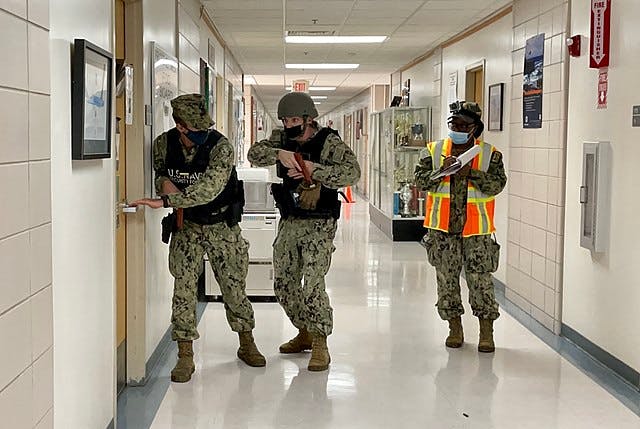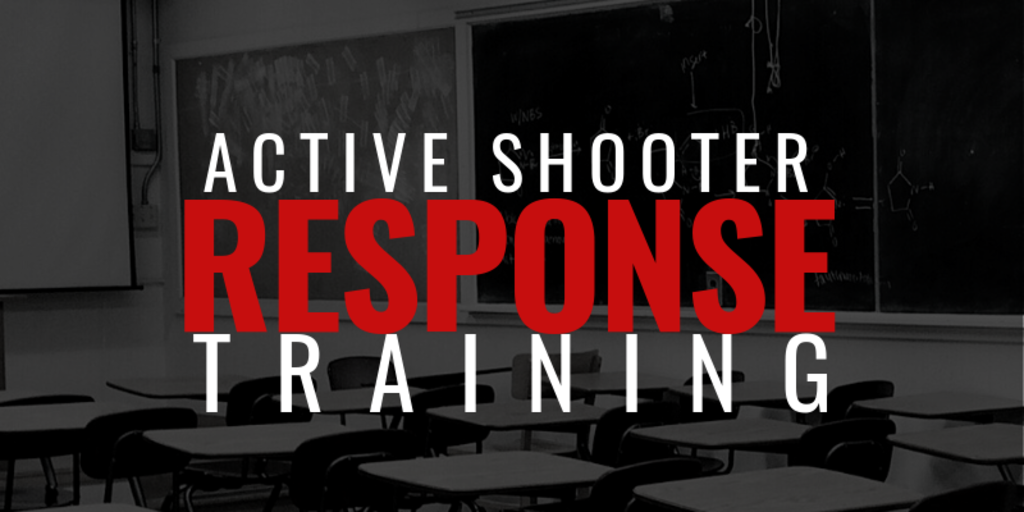Exactly How Active Shooter Training Boosts Emergency Action Preparedness
Exactly How Active Shooter Training Boosts Emergency Action Preparedness
Blog Article
Applying Energetic Shooter Training: Finest Practices for Producing a Safe and Prepared Neighborhood Setting
As areas face the unsettling truth of active shooter incidents, the application of comprehensive training programs comes to be crucial. What are the crucial components that can change a standard training program right into a durable version for neighborhood strength?

Recognizing the Demand for Educating
In an age marked by increasing events of violence in public spaces, comprehending the need for energetic shooter training has never ever been a lot more vital. The frequency of mass shootings across numerous environmentsâEUR" such as schools, work environments, and purchasing centersâEUR" emphasizes the necessity for individuals and companies to be prepared for such emergency situations. Active shooter situations can unravel rapidly, leaving little time for people to respond efficiently. Comprehensive training efforts can furnish individuals with the understanding and skills to respond emphatically.
Training fosters a feeling of empowerment and readiness, enabling people to really feel more safe in their environments. The benefits of active shooter training expand past instant feedback; they include boosting communication protocols and enhancing general safety procedures within organizations.
Secret Elements of Effective Programs
Reliable energetic shooter training programs incorporate numerous key elements that boost preparedness and action capacities. Initially, thorough curriculum development is vital, making sure that training content is pertinent, evidence-based, and customized to the certain needs of the company or neighborhood. This includes recognizing the dynamics of energetic shooter events and the psychological influence on individuals involved.
2nd, practical training situations ought to be utilized to imitate prospective situations, allowing individuals to exercise decision-making and feedback approaches in a regulated atmosphere. These drills facilitate muscle memory and construct confidence amongst individuals.
Third, a concentrate on interaction methods is essential. Developing clear lines of communication amongst police, emergency situation responders, and individuals ensures worked with feedbacks during an incident. Regular updates and correspondence course assist maintain interaction paths clear and reliable.
4th, recurring examination and feedback systems must be integrated into the training program - active shooter training. Evaluating the efficiency of training with participant comments and performance metrics permits constant enhancement
Last but not least, cultivating a society of safety and security and readiness within the area urges vigilance and positive actions, ensuring that individuals are not only experienced but also participated in preserving a safe and secure environment.
Engaging Neighborhood Stakeholders

To successfully involve these stakeholders, it is important to communicate the purposes and benefits of the training. Holding educational sessions can aid clarify the training's purpose, address worries, and describe the duties each stakeholder may play. Moreover, creating a stakeholder advising board can facilitate continuous discussion, allowing for diverse perspectives and understandings to be integrated into the training program.
Building relationships with area leaders and companies is also vital. Their assistance can improve outreach efforts, boost involvement, and ensure that training is customized to the one-of-a-kind demands of the area. Furthermore, stakeholders can aid in distributing info and resources, reinforcing the message of safety and security and preparedness.
Inevitably, engaging neighborhood stakeholders not just strengthens the training go now campaign but also cultivates a feeling of ownership among homeowners, bring about a much more resistant and educated area efficient in responding effectively to possible risks.
Educating Distribution Methods
Making use of a range of training distribution methods is necessary to fit the diverse learning styles and demands of individuals in active shooter training programs (active shooter training). Effective training can take numerous forms, consisting of talks, hands-on simulations, on-line modules, and interactive workshops. Each approach offers a distinct purpose and can enhance the total discovering experience

Online modules provide adaptability and accessibility, making it possible for individuals to find out at their own pace. These can include videos, quizzes, and conversations to assess understanding. Interactive workshops motivate seminar and analytic, advertising team effort and interaction abilities.
Including a blended approach that incorporates these approaches not just enriches the training experience but additionally ensures that participants are better prepared to respond successfully in the event of an energetic shooter situation (active shooter training). By dealing with various learning preferences, companies can produce a more enlightened and receptive community
Continual Examination and Enhancement
Routine evaluation and enhancement of energetic shooter training programs are vital to keeping their significance and efficiency. As hazards advance, so need to the methods and methodologies used in training. Continuous assessment makes certain that training web content shows the most recent intelligence on active shooter occurrences, including lessons picked up from current occasions and readjusting for our website arising trends.
To facilitate this procedure, companies ought to develop comments mechanisms that consist of individual examinations, expert testimonials, and event debriefs. Gathering information on participant performance throughout drills and exercises is vital, as it highlights locations needing enhancement and educates future training sessions. Additionally, involving with police and emergency responders can supply useful insights Check This Out right into the practicality and applicability of training procedures.
Frequently scheduled evaluations of training materials and methods ought to be mandated, promoting a setting of technology and flexibility. Organizations should likewise urge a society of ongoing knowing, where employee really feel encouraged to suggest modifications based upon their experiences. By dedicating to continuous analysis and improvement, companies not only improve the performance of their active shooter training programs yet also enhance their general commitment to safety and security and readiness within the neighborhood.
Conclusion
Finally, reliable application of energetic shooter training demands a detailed strategy that prioritizes community engagement and sensible simulations. By establishing tailored curricula, incorporating varied training techniques, and fostering partnership among stakeholders, communities can improve preparedness. Continual examination and comments systems are vital for adapting programs to arising threats, thus strengthening overall safety. Inevitably, a commitment to ongoing training and renovation grows a society of alertness and readiness, making sure a much safer setting for all neighborhood participants.
Report this page